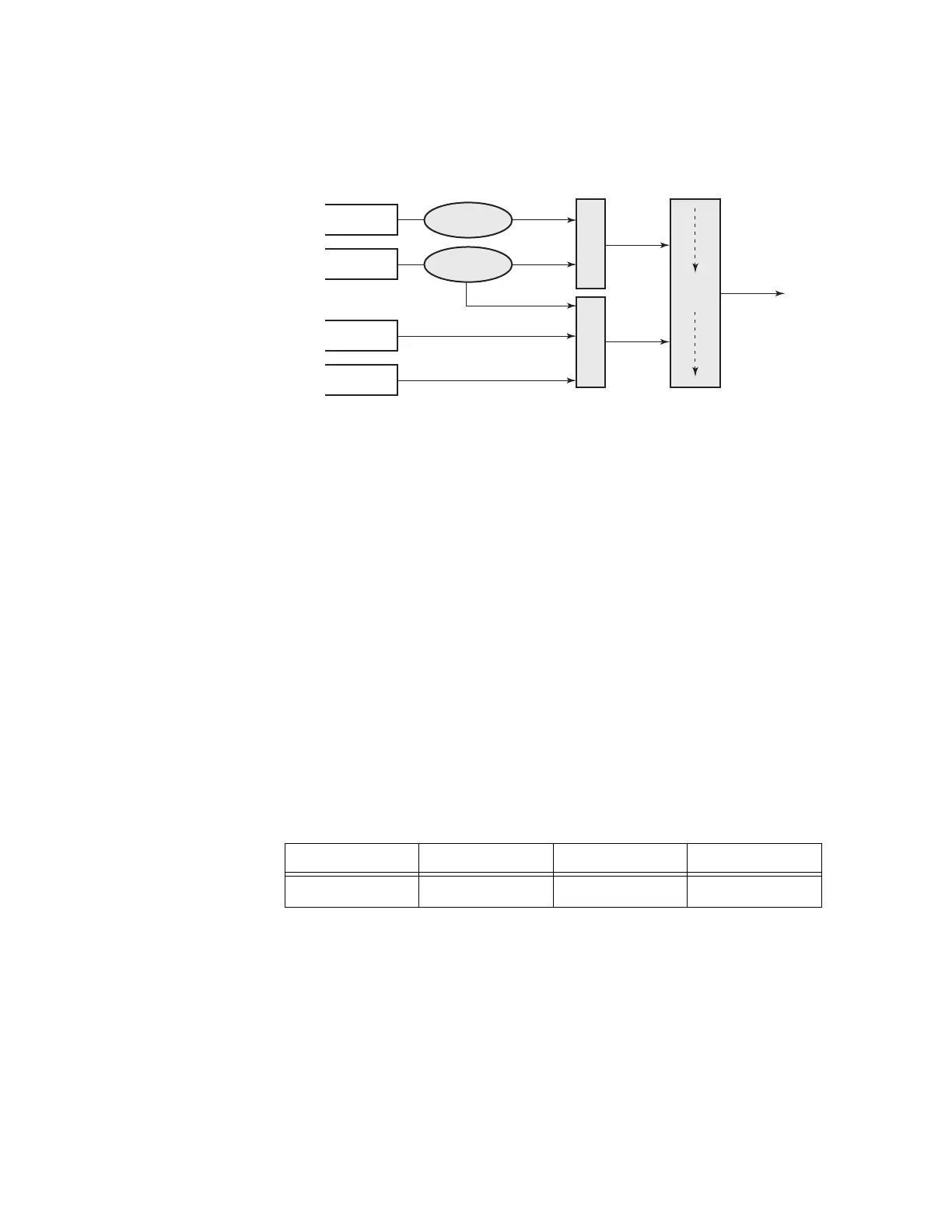QoS in MLFR and FRF.12 Fragmentation
838 Quality of Service Guide
Figure 54: FR Class Queue Scheduling for an MLFR Bundle
The minimum information rate, referred to as MIR in Figure 54 and MIR in CLI, applies to
Class 1 queues only. The MIR parameter value is entered as a percentage of the available
bundle rate. The WRR weight, referred to as W1, W2, and W3 in Table 72 and weight in CLI,
applies to class 1, class 2, and class 3 queues. W1 is not configurable and is internally set to
a value of 1 such that Class 1 queue shares 1% of the available bundle rate when the sum of
W1, W2, and W3 equals 100. W2 and W3 weights are integer values and are user
configurable such that Class 2 queue shares W2/(W1+W2+W3) and Class 3 queue shares
W3/(W1+W2+W3) of the available bundle rate.
All queue threshold and queue scheduling parameters are adjusted to the available bundle
rate. If a member link goes down or a new member link is added to the bundle, the scheduling
parameters MIR, W1, W2, W3, as well as the per class queue thresholds OOP and max are
automatically adjusted to maintain the same values.
In addition, operator user can configure the value of the FR scheduling class ingress re-
assembly timeout for an MLFR bundle. The default values of the timers are shown in
Table 73.
The following operations require the bundles or links associated with a QoS profile to be
shutdown to take effect.
• A change of the numbered ingress or egress QoS profile.
The following operations can be performed without shutting down the associated bundles or
links:
Table 73: Default FR Ingress QoS Profile: Reassembly Timers (msec)
Class 0 Class 1 Class 2 Class 3
10 10 100 100
al_0195
Class0 > 100%
no
no
W1
W2
W3
yes
> MIR
RR
Wrr
Strict
Priority
Class1
Class2
Class3
